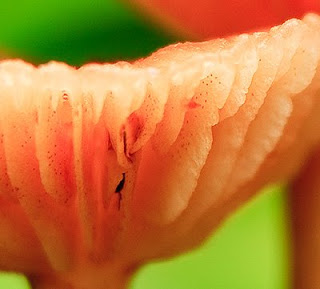 Last week I posted about how handy the Live View function is when trying to create a nice white balance. I have to admit that before I bought a camera with Live View I wasn't really convinced of its usefulness. I had become so used to composing my images through a viewfinder that the idea of looking at the screen to do it on anything other than a little point and shoot seemed to be a waste of time.
Last week I posted about how handy the Live View function is when trying to create a nice white balance. I have to admit that before I bought a camera with Live View I wasn't really convinced of its usefulness. I had become so used to composing my images through a viewfinder that the idea of looking at the screen to do it on anything other than a little point and shoot seemed to be a waste of time.Then I got a camera with it on and now I'm hooked. Not only for the white balance trick I talked about above but for its ability to really help nail the focus in your images.
One of the things I have always loved about nature and landscape photography is really sharp pictures. I'm a sucker for photographs with razor sharp edges and lots of detail.
The only problem I ever have with auto-focus is that sometimes you just question whether it's focussed on the right part of the picture. Sometimes it's right on and every so often you get the feeling that it's just a little out. It's particularly noticeable with macro photography, which is why a lot of macro stuff is done with manual focus.
Which is fine if you've got 20/20 vision but if you're like me and your vision is probably less reliable than your auto-focus (I've got a pointed cornea and am just about blind in one eye!) it makes it a little difficult.
 If only you could make the picture bigger to help you focus. Well with Live View you can. As well as the autofocus modes Live View also has a great aid to manual focus. It lets you zoom into your composition while looking at it on the screen. So, fo example, for the mushrooms above I set up a composition I liked through the viewfinder and then turned on Live View. I could then zoom into the composition (up to 10X magnification) before pressing the shutter to make sure I was focused exactly where I wanted to be.
If only you could make the picture bigger to help you focus. Well with Live View you can. As well as the autofocus modes Live View also has a great aid to manual focus. It lets you zoom into your composition while looking at it on the screen. So, fo example, for the mushrooms above I set up a composition I liked through the viewfinder and then turned on Live View. I could then zoom into the composition (up to 10X magnification) before pressing the shutter to make sure I was focused exactly where I wanted to be.It's a bit hard to tell from the little thumbnail above so here's a 100% crop. This is pretty much the view you get looking at the Live View screen, so much better than trying to focus manually through the viewfinder. As you can see I've manually focussed on an area just behind the front edge of the left hand mushroom. You can see with such a small depth of field how important it is to be focussed just on the right spot.
And this isn't just useful for tiny things. I've been using it in general landscape work - in particular when using a telephoto lens - to manually make sure I'm focussed just where I want to be to get the sharpest pictures possible.
Of course that's not all that's involved in getting sharp images but it's a step in the right direction. Oh and if your subject moves you're in a bit of trouble, but for landscape and macro work (and of course still-life images) this really is a major improvement in helping us get sharper images.

No comments:
Post a Comment